Clean, pristine water captivates travelers worldwide. Some destinations offer water so transparent that boats appear to float on air, and the ocean floor remains visible at incredible depths. These natural wonders showcase our planet’s most spectacular aquatic environments.
This guide explores seven locations featuring the clearest water in the world. You’ll discover what makes these waters so transparent, where to find them, and practical tips for experiencing these remarkable destinations yourself.
What Makes Water Crystal Clear?
Several factors contribute to exceptionally clear water. Low levels of sediment, minimal algae growth, and specific geological conditions create the transparency that defines these special locations.
Cold temperatures often preserve water clarity by slowing biological processes. Additionally, limestone and volcanic rock formations naturally filter water, removing particles and impurities. Remote locations with limited human impact also maintain pristine conditions.
The clearest waters typically have visibility extending 100 feet or more underwater. These conditions allow sunlight to penetrate deeply, creating the stunning visual effects that make these destinations so memorable.
Blue Lake, New Zealand
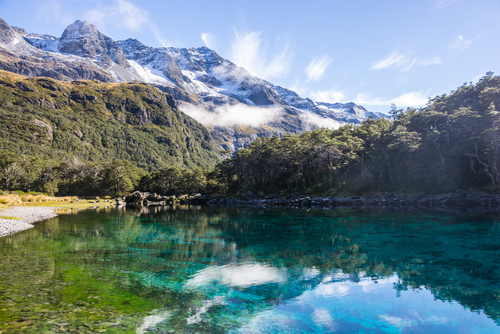
Blue Lake holds the scientific record for the clearest water on Earth. Located in Nelson Lakes National Park, this glacial lake offers visibility up to 262 feet underwater.
The water’s exceptional clarity comes from its glacial origin and natural filtration through surrounding beech forests. Scientists measure its optical clarity at levels comparable to distilled water.
Accessing Blue Lake requires a challenging multi-day hike through rugged terrain. The lake sits at high altitude, making it accessible only during summer months. Local Māori consider the lake sacred, and swimming is prohibited to preserve its pristine condition.
Devil’s Den, Florida
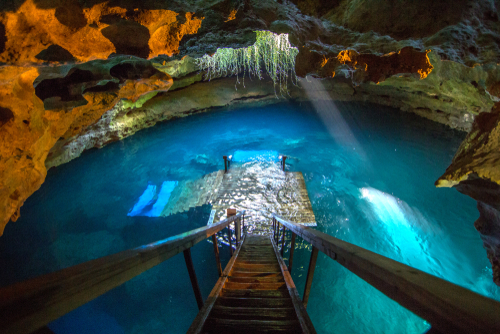
Devil’s Den features some of the clearest freshwater in North America. This underground spring system maintains year-round temperatures around 72°F with exceptional visibility.
The cavern’s limestone formation naturally filters groundwater, creating crystal-clear conditions perfect for snorkeling and diving. Ancient rock formations and underwater passages provide stunning scenery beneath the surface.
Located in Williston, Florida, Devil’s Den offers guided tours and equipment rentals. The facility operates year-round, making it accessible regardless of weather conditions. Advanced divers can explore deeper passages with proper certification.
Crater Lake, Oregon
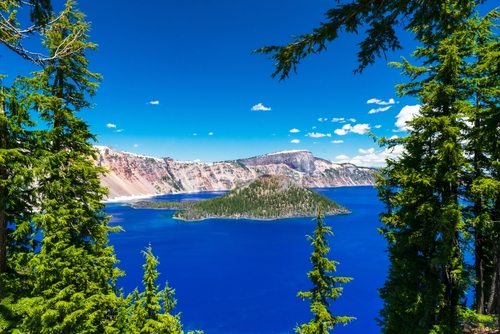
Crater Lake showcases incredibly clear water within an ancient volcanic caldera. The lake reaches depths exceeding 1,900 feet, with visibility often extending beyond 100 feet.
Snowmelt and rainfall provide the lake’s only water sources, creating exceptionally pure conditions. The absence of inlets or outlets prevents sediment accumulation, maintaining the water’s deep blue color and clarity.
Crater Lake National Park provides multiple viewpoints around the rim drive. Boat tours operate during summer months, offering closer access to the water’s surface. Swimming is technically allowed but challenging due to steep shorelines and cold temperatures.
Jiuzhaigou Valley, China
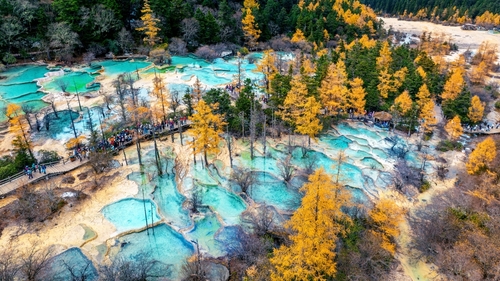
Jiuzhaigou Valley contains numerous lakes and waterfalls with remarkably clear water. These alpine lakes showcase vivid turquoise and emerald colors against limestone formations.
Calcium carbonate deposits create the distinctive coloring while maintaining exceptional water clarity. Ancient glacial activity carved the valley’s unique landscape, creating natural dams that formed these pristine lakes.
The UNESCO World Heritage site attracts millions of visitors annually. Wooden walkways provide access while protecting the fragile ecosystem. Spring and autumn offer the best conditions for photography and sightseeing.
Flathead Lake, Montana
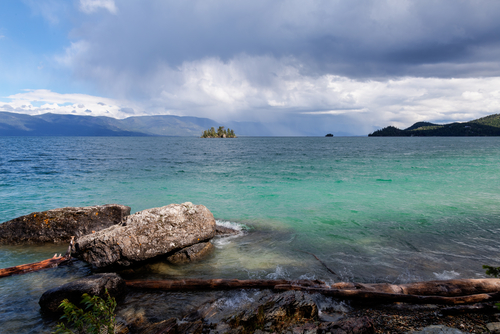
Flathead Lake ranks among North America’s clearest large freshwater bodies. This natural lake offers visibility extending 30 feet or more in many areas.
Glacial origins and limited development around the shoreline preserve the lake’s exceptional water quality. Rocky Mountain snowmelt feeds the lake, providing consistently clean water sources.
Multiple access points around the lake accommodate various activities. Summer months provide the warmest temperatures for swimming, while year-round fishing attracts outdoor enthusiasts. Boat rentals and guided tours operate from several marinas.
Maldives Waters
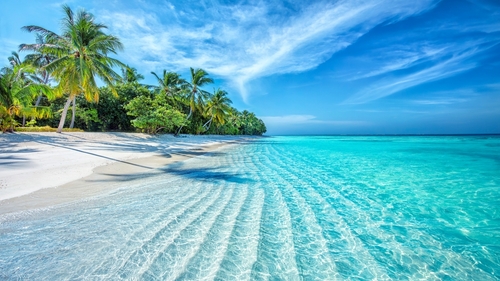
The Maldives offer consistently clear tropical waters with visibility often exceeding 100 feet. These Indian Ocean atolls showcase pristine coral reefs and abundant marine life.
Ocean currents continuously refresh the water around these low-lying islands. Coral sand and minimal land-based pollution contribute to the exceptional water clarity that defines this destination.
Resort islands provide direct access to these clear waters through snorkeling and diving opportunities. Year-round warm temperatures make water activities comfortable throughout all seasons. Marine protected areas preserve the coral ecosystems that maintain water quality.
Lake Tahoe, California/Nevada
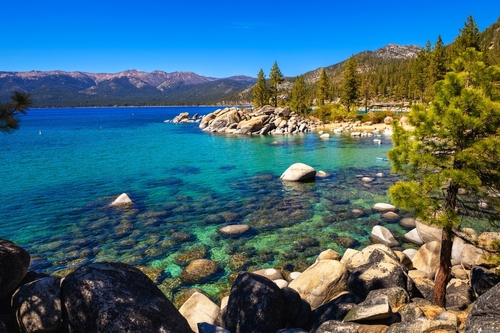
Lake Tahoe combines impressive size with exceptional clarity. This alpine lake maintains visibility depths reaching 70 feet in optimal conditions.
High elevation and surrounding granite formations create natural filtration systems. Cold temperatures and limited nutrient input prevent excessive algae growth that clouds other large lakes.
Multiple beaches and access points surround the lake’s 72-mile shoreline. Summer activities include swimming, kayaking, and paddleboarding. Winter transforms the area into a skiing destination while maintaining the lake’s clear conditions.
Planning Your Clear Water Adventure
Research seasonal conditions before planning your trip. Many destinations offer the best visibility during specific months when weather and water conditions align optimally.
Pack appropriate gear for water activities. Snorkeling equipment, waterproof cameras, and sun protection enhance your experience while protecting these fragile environments.
Respect local regulations and environmental guidelines. Many clear water destinations implement strict rules to preserve their pristine conditions for future generations.
Consider booking accommodations well in advance. Popular clear water destinations often experience high demand, especially during peak visibility seasons.
Protecting These Natural Treasures
These remarkable destinations require ongoing protection to maintain their exceptional clarity. Climate change, pollution, and increased tourism pressure threaten these fragile ecosystems.
Support responsible tourism practices by choosing operators committed to environmental protection. Follow Leave No Trace principles during your visits to minimize impact on these pristine environments.
Consider contributing to conservation organizations working to preserve these natural wonders. Your support helps fund research and protection efforts that maintain water quality for future generations.
The clearest water in the world represents some of our planet’s most precious natural resources. These destinations offer unforgettable experiences while reminding us of the importance of environmental stewardship.
FAQ
What makes water appear so clear in certain locations?
Water appears exceptionally clear in some locations due to minimal pollution, lack of sediment, and low levels of organic matter. Factors like the presence of natural springs, surrounding foliage, and controlled human activity also contribute to maintaining clarity.
Can you swim in these clear water destinations?
Swimming rules vary by location. While some places allow swimming and snorkeling, others restrict access to protect the fragile ecosystem. Always check local guidelines before planning your visit.
Are there best times to view the clearest waters?
Yes, the best times to view clear waters usually coincide with dry seasons or calm weather conditions when there is minimal disturbance to the water. Early mornings also offer calm and undisturbed viewing opportunities.
How can I help preserve these clear water sources?
You can contribute by practicing eco-friendly tourism. Avoid using harmful sunscreens, always take your trash with you, and respect local regulations designed to protect these pristine environments.
Do these locations require special travel preparations?
Some destinations may require specific gear, permits, or guided tours, especially if they are in remote or protected areas. It is recommended to research your destination thoroughly and prepare accordingly.